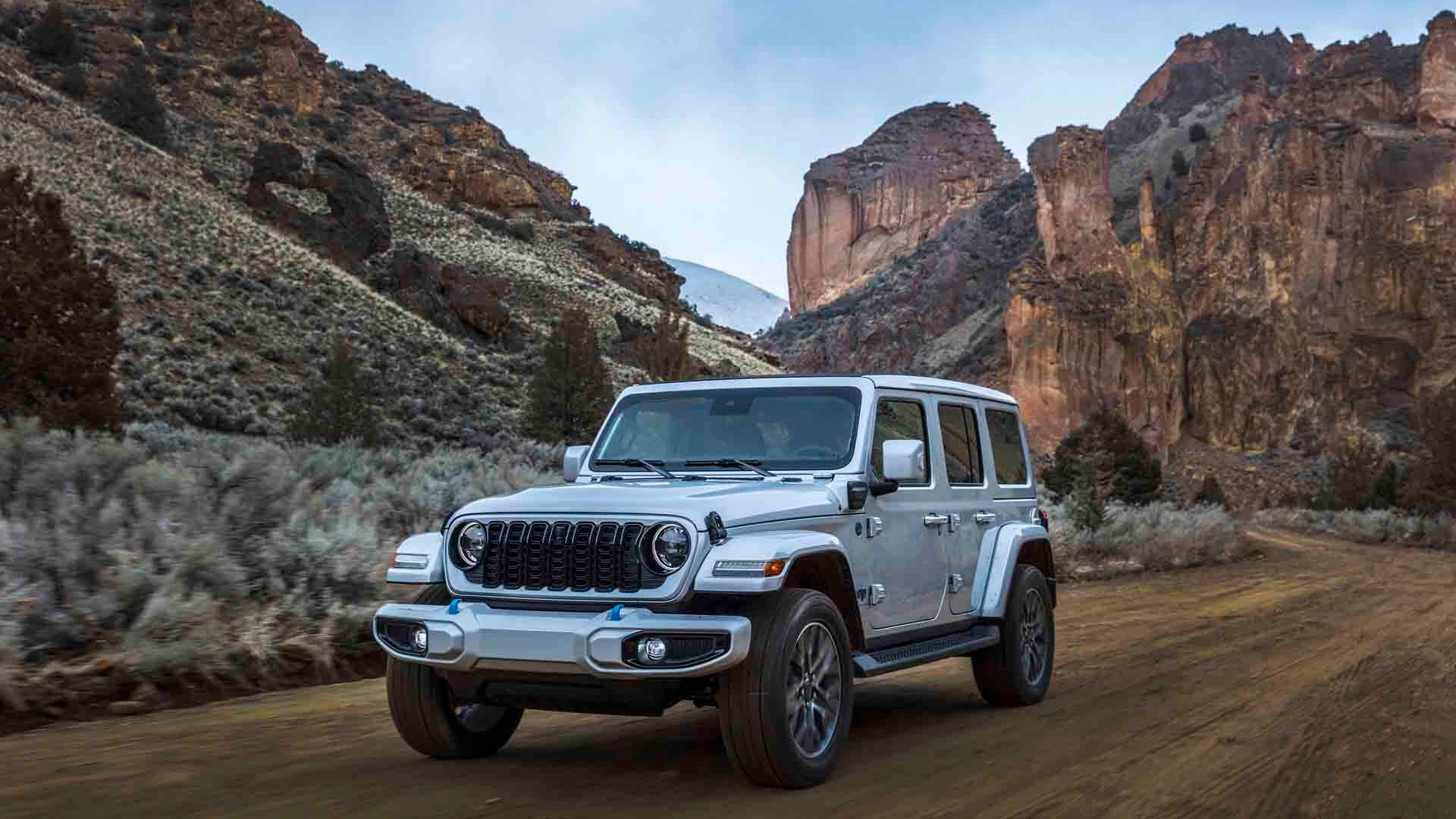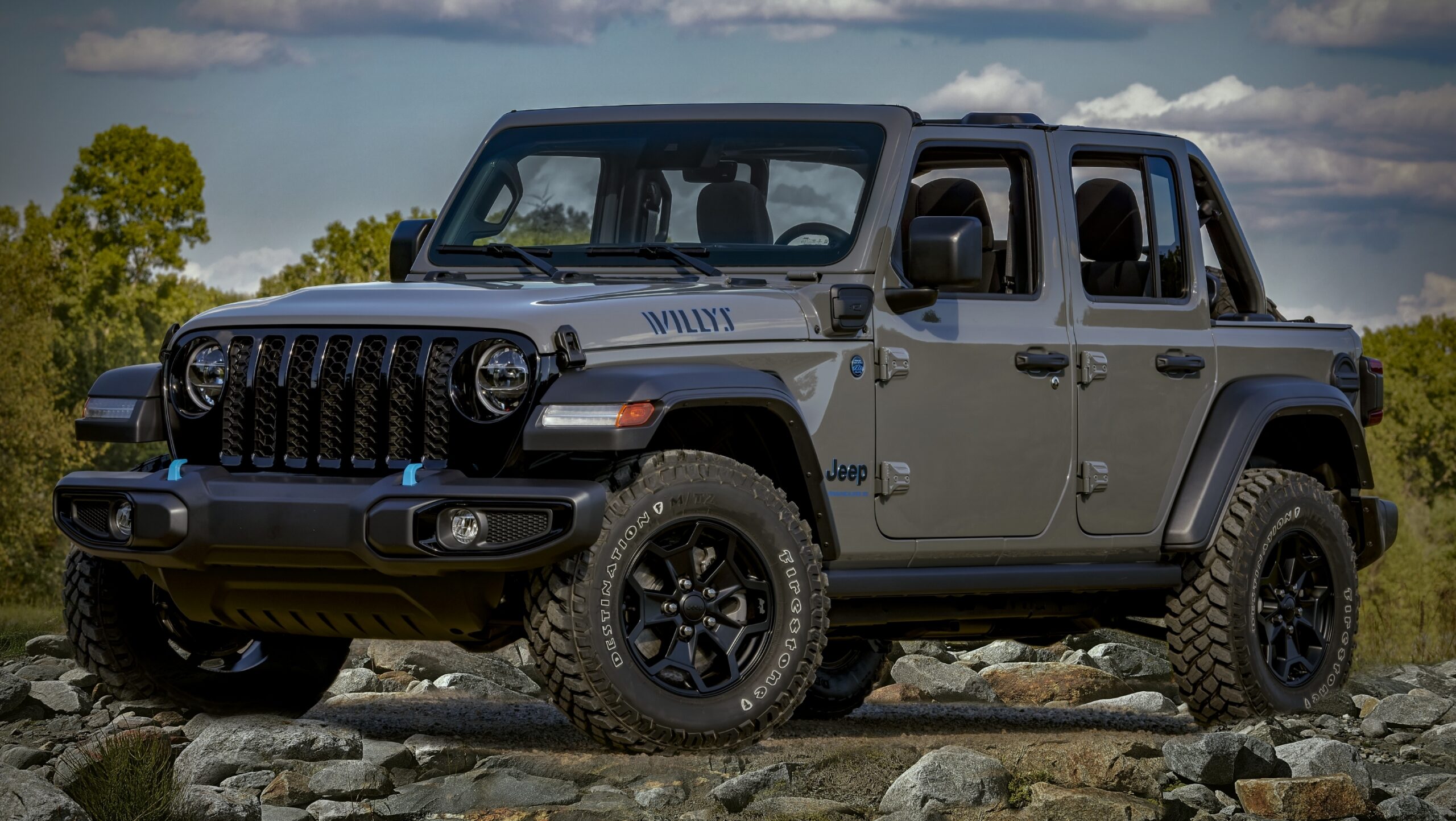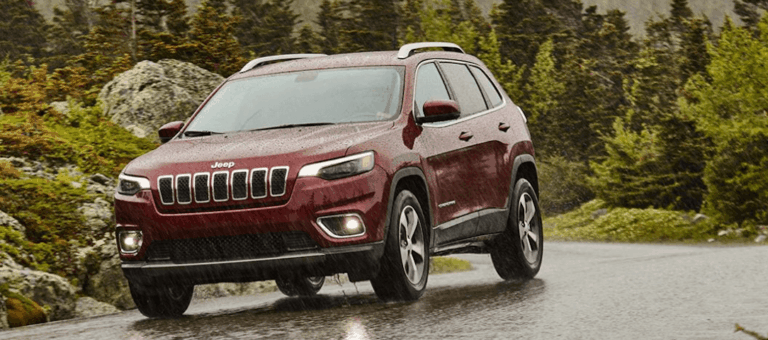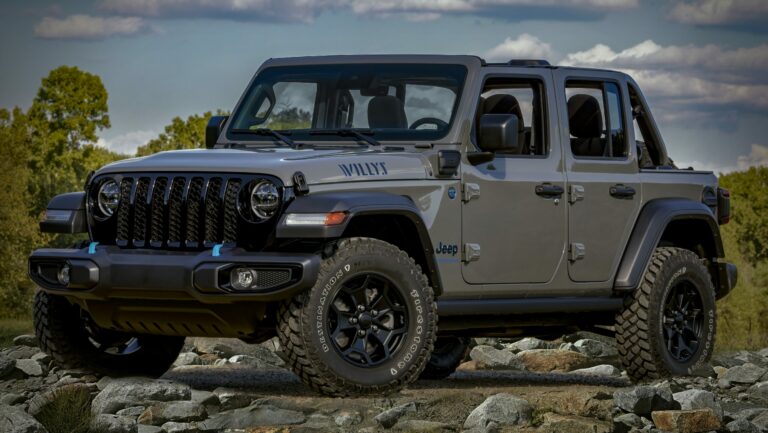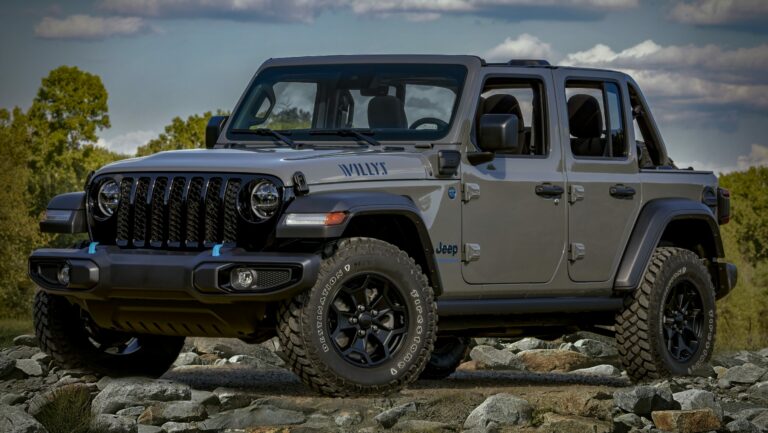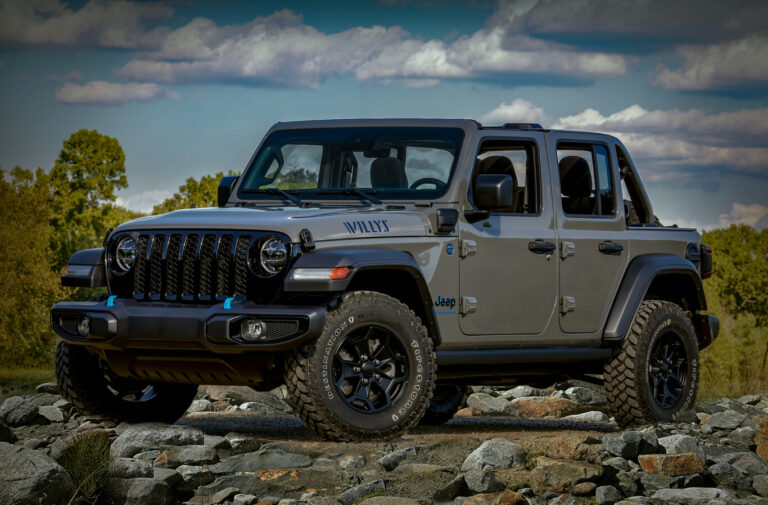How To Jeep Wrangler Soft Top: Embrace the Open-Air Freedom
How To Jeep Wrangler Soft Top: Embrace the Open-Air Freedom jeeps.truckstrend.com
The Jeep Wrangler is more than just a vehicle; it’s a lifestyle. And central to that lifestyle for many enthusiasts is the soft top. Offering unparalleled versatility, the ability to quickly transform your enclosed cabin into an open-air adventure machine is one of the Wrangler’s most cherished features. But for new owners, or those considering the switch from a hard top, the "how-to" of operating, maintaining, and understanding the Jeep Wrangler soft top can seem daunting. This comprehensive guide will demystify the process, empowering you to fully embrace the iconic freedom your soft top provides.
Understanding Your Soft Top: Anatomy and Types
How To Jeep Wrangler Soft Top: Embrace the Open-Air Freedom
Before you can confidently manipulate your soft top, it’s essential to understand its components and the different types available. A typical Jeep Wrangler soft top consists of a fabric canopy stretched over a collapsible frame, integrated with removable windows.
Key Components:
- Fabric Canopy: The main textile, often made from durable materials like sailcloth, vinyl, or premium twill.
- Frame/Bow Assembly: The internal metal structure that supports the fabric and allows it to fold down.
- Header Bar: The frontmost bar that latches to the windshield frame.
- Tailgate Bar: A bar that secures the rear window to the tailgate.
- Windows: Typically three removable windows – two side windows and one rear window – that attach via zippers and plastic retainers (often called "clips" or "channels").
- Zippers: Crucial for attaching windows and sometimes for sunrider functionality.
- Latches/Clips: Various mechanisms to secure the top to the vehicle’s body or frame.
![]()
Types of Soft Tops:
- Factory Soft Tops: Designed by Mopar, these come standard or as an option on new Wranglers. They are known for their precise fit and integration.
- Standard Vinyl/Sailcloth: Durable, but can be noisier and feel colder in winter.
- Premium Twill: A thicker, multi-layered fabric offering better insulation, reduced road noise, and a more luxurious look.
- Aftermarket Soft Tops: Many reputable brands (e.g., Bestop, Smittybilt) offer alternatives. These can include:
- Direct Replacements: Similar to factory tops but often with innovative features.
- Frameless Tops: Utilize the Jeep’s roll bar for support, offering a more streamlined look and sometimes easier storage.
- Specialty Tops: Such as "bikini" or "safari" tops for minimalist open-air driving.

Understanding these basics is your first step towards mastering your soft top.
The Unparalleled Benefits of a Soft Top
Choosing a soft top over a hard top isn’t just a practical decision; it’s a lifestyle choice rooted in the unique benefits it offers:
- Ultimate Open-Air Experience: No other vehicle makes it as easy to go from fully enclosed to completely open. The soft top allows you to quickly enjoy the sun, wind, and sounds of nature.
- Versatility: Most soft tops offer multiple configurations. You can run with just the "Sunrider" feature open (a flip-back sunroof), in safari mode (windows out, top up), or completely folded down.
- Ease of Storage: Unlike a bulky hard top that requires dedicated storage space (and often a hoist), a soft top folds neatly into the rear of the vehicle, ready for immediate deployment.
- Lighter Weight: Soft tops are significantly lighter than hard tops, which can offer a marginal improvement in fuel economy and a lower center of gravity.
- Aesthetics: Many Jeep owners simply prefer the rugged, classic look of a soft top.
- Quick Transformation: With practice, you can transition your Jeep from fully buttoned up to completely open in minutes, adapting to changing weather or moods on the fly.
How to Operate Your Soft Top: Step-by-Step Guides
Operating your soft top is an art that becomes second nature with practice. Always refer to your specific Jeep’s owner’s manual, as minor variations exist between models and years.
1. Opening the Sunrider Feature (Quick Flip-Back Sunroof)
This is the most common and easiest soft top operation.
- Unlatch: Reach above the windshield and unlatch the two main latches (one on each side) that secure the header bar to the windshield frame.
- Fold Back: Gently push the fabric back. It will fold neatly into a "Z" shape, resting above the rear seats.
- Secure (Optional): Some models have straps to secure the folded fabric, preventing flapping at highway speeds.
2. Folding Down the Top (Full Open)
This process involves removing the windows and folding the entire top back. Perform this in warm weather if possible, as cold vinyl can be stiff and prone to cracking.
- Remove Rear Window:
- Unzip the top and side zippers of the rear window.
- Carefully slide the tailgate bar out of its channel at the bottom of the window.
- Roll or lay the window flat for storage (do NOT fold or crease it).
- Remove Side Windows:
- Unzip the top and front zippers of each side window.
- Carefully pull the plastic retainers (the "clips" or "channels") out of the door surrounds and the body of the Jeep.
- Store them flat with the rear window.
- Unlatch Header: Unlatch the two main latches above the windshield.
- Release Side Cables (if applicable): Some tops have spring-loaded cables that need to be unhooked from the door surrounds.
- Fold Back: Gently push the header bar up and back. The frame will collapse, and the fabric will fold down into the rear cargo area. Ensure the fabric doesn’t get pinched by the frame.
- Secure: Use the integrated straps or bungee cords to secure the folded top to the roll bar or floor, preventing it from bouncing or unfolding while driving.
3. Closing the Top (Re-installation)
Reversing the process requires a bit more finesse, especially when aligning windows.
- Unsecure & Unfold: Unstrap the folded top and gently pull the header bar forward, allowing the frame to unfold.
- Latch Header: Align the header bar with the windshield frame and latch it securely. Ensure it’s centered and fully seated.
- Secure Side Cables (if applicable): Re-hook the side cables.
- Attach Side Windows:
- Start by inserting the plastic retainers into the door surrounds first.
- Then, slide the bottom retainer into the body channel.
- Finally, zip the top and front zippers, pulling them forward from the rear. Don’t force zippers if they stick; use a lubricant.
- Attach Rear Window:
- Slide the tailgate bar into the channel at the bottom of the window.
- Insert the tailgate bar into its clips on the tailgate.
- Zip the side and top zippers, pulling them inward from the outside.
4. Removing the Entire Soft Top (for storage or hard top swap)
This is less frequent but necessary for long-term storage or switching to a hard top.
- Perform all steps for "Folding Down the Top (Full Open)."
- Detach from Roll Bar: Depending on your model, you’ll unbolt or unclip the rear-most section of the soft top frame from the roll bar or body tub.
- Lift Off: With a helper, carefully lift the entire soft top assembly off the Jeep.
- Store Properly: Store the soft top in a clean, dry, climate-controlled environment, ideally suspended or in a dedicated soft top storage bag to prevent creases and damage.
Essential Tips for Soft Top Care and Maintenance
Proper care extends the life and appearance of your soft top significantly.
- Clean Regularly: Use mild soap (like dish soap) and water, or specialized soft top cleaners. Avoid harsh detergents, abrasive brushes, or automatic car washes. Rinse thoroughly.
- Window Care:
- Always clean windows with a soft microfiber cloth and a dedicated plastic window cleaner (e.g., Novus Plastic Polish).
- Never wipe dirty windows dry, as this will scratch them. Rinse off grit first.
- When storing, lay windows flat or roll them carefully with a soft cloth in between to prevent creasing and scratching.
- Zipper Maintenance: Zippers can stick or break. Lubricate them periodically with a silicone-based zipper lubricant or a specialized zipper wax. Keep them clean.
- Fabric Protection: Apply a UV protectant specifically designed for soft top fabrics to prevent fading and cracking.
- Cold Weather Precautions: Vinyl windows become brittle in cold weather. Avoid folding or unzipping them when temperatures are below freezing to prevent cracking.
- Repair Small Tears: Invest in a soft top repair kit for minor punctures or tears. Address them quickly to prevent them from worsening.
- Proper Folding: Always fold the top as recommended by the manufacturer to avoid permanent creases in the fabric.
Common Challenges and Troubleshooting
Even with proper care, you might encounter some common soft top issues.
- Sticking Zippers: Clean them thoroughly and apply lubricant. If severely damaged, they may need professional repair or replacement.
- Leaking: Check all seals, especially around the door surrounds and header bar. Ensure the top is latched tightly. Sometimes, worn seals need replacement.
- Windows Fogging/Scratching: Regular cleaning with appropriate products and careful handling during removal/storage are key. Deep scratches may require replacement windows.
- Difficulty Folding/Unfolding: This is often due to cold weather (making the fabric stiff) or improper technique. Try on a warmer day or let the Jeep sit in the sun for a bit. Ensure no fabric is caught in the frame.
- Road Noise/Flapping: Ensure all components are latched and secured properly. Premium twill tops offer better noise reduction. Check for worn seals or loose frame components.
Choosing the Right Soft Top (for Replacement or Upgrade)
If your existing top is beyond repair or you’re upgrading from a hard top, consider these factors:
- Material: Vinyl (economical, durable) vs. Twill (quieter, more insulated, premium look).
- Frame Type: Complete frame (traditional) vs. Frameless (uses roll bar, often more streamlined).
- Tinted Windows: Most modern soft tops come with tinted windows for privacy and sun protection.
- Budget: Prices vary significantly between basic vinyl replacements and premium factory-style tops.
- Ease of Operation: Read reviews to see if owners find the specific model easy to operate.
Price Guide: Soft Top Components & Services
Understanding the potential costs associated with soft tops can help you budget for ownership and maintenance. Prices are approximate and can vary based on model year, brand, and supplier.
| Item/Service | Description | Estimated Price Range (USD) | Notes |
|---|---|---|---|
| New Soft Top Kit | Complete top with frame, fabric, and windows | ||
| – OEM (Mopar) Standard Vinyl | Factory replacement, good quality | $1,500 – $2,500 | Specific to your Jeep model. |
| – OEM (Mopar) Premium Twill | Factory replacement, enhanced insulation & quietness | $2,000 – $3,500 | A significant upgrade in comfort. |
| – Aftermarket Standard | Brands like Bestop, Smittybilt; often good value | $900 – $1,800 | Quality varies; research reviews. |
| – Aftermarket Premium | Brands like Bestop (e.g., Supertop Ultra), enhanced features | $1,500 – $2,800 | May include innovative folding mechanisms. |
| – Aftermarket Frameless | Utilizes roll bar, minimalist look | $700 – $1,500 | Lighter, often easier to store. |
| Replacement Components | |||
| – Full Window Kit | All three replacement windows (rear & two sides) | $300 – $600 | Essential if windows are scratched/damaged. |
| – Individual Window | Single replacement window (e.g., just the rear) | $100 – $250 | |
| – Tailgate Bar | Replacement bar for securing rear window | $50 – $150 | Can be lost or damaged. |
| – Header Latch Kit | Replacement latches for windshield header | $40 – $100 | |
| – Door Surrounds (Pair) | Plastic channels that frame doors for window attachment | $150 – $300 | Can crack or wear over time. |
| Maintenance & Repair | |||
| – Soft Top Cleaner | Specialized cleaner for fabric and vinyl | $15 – $30 | Prevents damage from harsh chemicals. |
| – Plastic Window Cleaner | For clear vinyl/plastic windows (e.g., Novus) | $10 – $25 | Essential for clarity and scratch prevention. |
| – UV Protectant | Sprays to prevent fading and cracking | $20 – $40 | Extends fabric life, especially in sunny climates. |
| – Zipper Lubricant/Wax | Silicone-based lubricants or wax | $10 – $20 | Keeps zippers smooth and prevents sticking. |
| – Soft Top Repair Kit | Patches, adhesive for small tears | $20 – $50 | For DIY minor repairs. |
| Professional Services | |||
| – New Soft Top Installation | Labor for installing a new soft top | $200 – $500 | Recommended if you’re not comfortable with DIY. |
| – Leak Diagnosis/Repair | Shop time to find and fix leaks | $100 – $300+ | Varies greatly based on complexity. |
| – Zipper/Stitching Repair | Professional repair of torn seams or broken zippers | $50 – $250+ | Depends on the extent of damage. |
Frequently Asked Questions (FAQ)
Q: How long does it take to open or close the soft top?
A: With practice, opening the Sunrider feature takes seconds. Folding the entire top down can take 3-5 minutes. Closing it, especially attaching windows, might take 5-10 minutes initially, but you’ll get faster with practice.
Q: Can I wash my Jeep with the soft top on in an automatic car wash?
A: It is strongly NOT recommended. The harsh chemicals, high-pressure sprays, and brushes in automatic car washes can damage the fabric, scratch the windows, and potentially cause leaks or rips. Hand washing is always best.
Q: Are soft tops waterproof?
A: When properly installed and maintained, a soft top is designed to be highly water-resistant and keep the interior dry during rain. However, older tops, worn seals, or improper installation can lead to leaks. They are not designed to be submerged.
Q: How long do soft tops typically last?
A: With proper care and maintenance, a quality soft top can last anywhere from 5 to 10 years, or even longer. Factors like sun exposure, climate, and frequency of operation will influence its lifespan.
Q: Can I drive with the windows out but the top up?
A: Yes, this is a popular configuration often called "safari mode." It offers a great open-air feel while providing shade and some protection from the elements. Just ensure your windows are securely stored.
Q: Is it hard to install a brand new soft top myself?
A: Installing a new soft top can be challenging, especially for first-timers. It often requires patience, some strength, and ensuring the fabric is warm and pliable. Many prefer professional installation to ensure a tight, leak-free fit.
Q: What’s the best way to store the soft top windows when they’re off?
A: The best way is to lay them flat, ideally separated by a soft cloth or specialized window storage sleeves, and store them in a clean, dry place where they won’t be creased or folded. Avoid rolling them tightly.
Conclusion
The Jeep Wrangler soft top is an integral part of the Wrangler experience, offering unparalleled freedom and versatility. While it may seem complex at first, understanding its components, learning the step-by-step operations, and committing to regular care will transform it from a mystery into one of your Jeep’s most cherished features. Embrace the ability to quickly adapt your ride to any adventure, whether it’s a sunny trail run or an unexpected rain shower. With this guide, you’re now equipped to confidently operate and maintain your soft top, truly living the open-air Jeep lifestyle.
